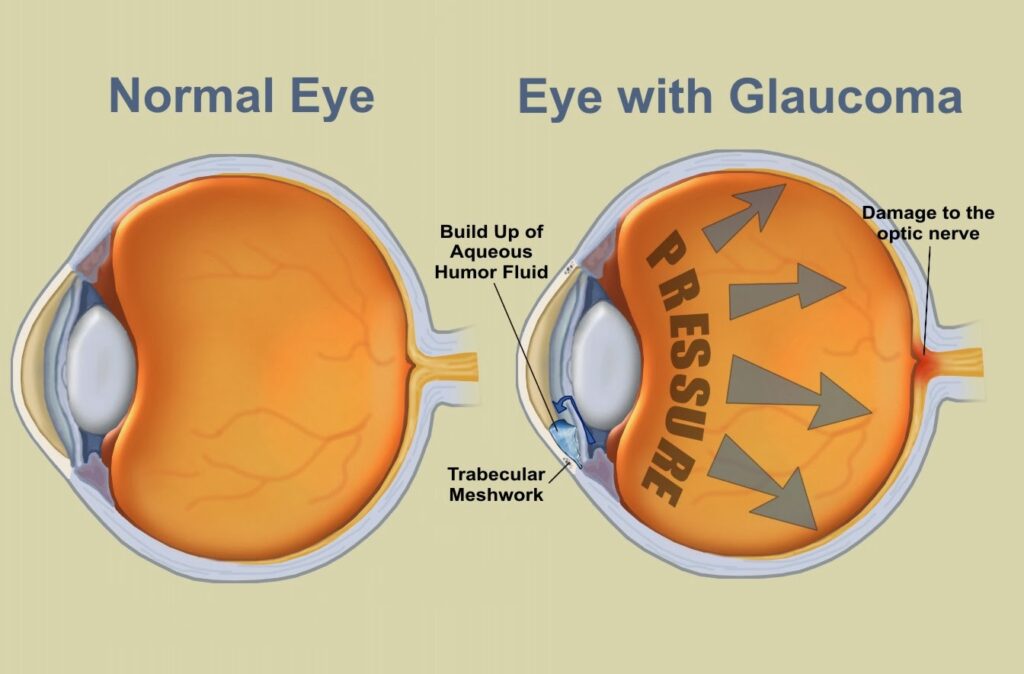What is Glaucoma?
Glaucoma is an eye condition that damages the optic nerve. The health of the optic nerve is vital for good vision. This damage is often caused by increased pressure in your eye. Glaucoma is one of the leading causes of blindness for people over the age of 60. It can more common in older adults but can occur at any age. Many forms of glaucoma have no warning signs. Damage from glaucoma is so gradual that you may not notice a change in vision until the condition is at an advanced stage.
Vision loss due to glaucoma cannot be reversed, so it is important to have regular eye exams so a diagnosis can be made in its early stages and treated appropriately. The pressure in the eyes is measured during a comprehensive eye examination. If glaucoma is recognized early, vision loss can be slowed or prevented. If you have glaucoma, you’ll generally need treatment for the rest of your life. If left untreated, glaucoma will eventually cause blindness. Even with treatment, about 15 percent of people with glaucoma become blind in at least one eye within 20 years.

Cause
Glaucoma is the result of damage to the optic nerve. As this nerve gradually deteriorates, blind spots develop in your visual field. For reasons that doctors don’t fully understand, this nerve damage is usually related to increased pressure in the eye. Elevated eye pressure is due to a buildup of a fluid (aqueous humor) that flows throughout the inside of your eye. This internal fluid normally drains out through a tissue called the trabecular meshwork at the angle where the iris and cornea meet. When fluid is overproduced or the drainage system doesn’t work properly, the fluid can’t flow out at its normal rate and eye pressure increases.
Glaucoma tends to run in families. In some people, scientists have identified genes related to high eye pressure and optic nerve damage.
Treatment
Your doctor will review your medical history and conduct a comprehensive eye examination. He or she may perform several tests, including:
Measuring intraocular pressure (tonometry)
Testing for optic nerve damage with a dilated eye examination and imaging tests
Checking for areas of vision loss (visual field test)
Measuring corneal thickness (pachymetry)
Inspecting the drainage angle (gonioscopy)
The damage caused by glaucoma can’t be reversed. But treatment and regular checkups can help slow or prevent vision loss, especially if you catch the disease in its early stages.
Glaucoma is treated by lowering your eye pressure (intraocular pressure). Depending on your situation, your options may include prescription eyedrops, oral medications, laser treatment, surgery or a combination of any of these.
Hours
- Monday - 8:40 to 12:00 / 1:10 to 5:00
- Tuesday - 8:40 to 12:00 / 1:10 to 5:00
- Wednesday - 9:00 to 7:00
- Thursday - 8:40 to 12:00 / 1:10 to 5:00
- Friday - 8:00 to 2:00
- Saturday - Closed
- Sunday - Closed